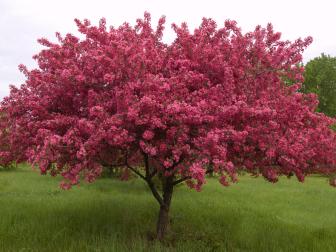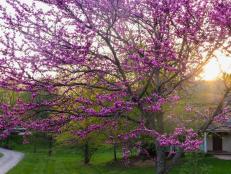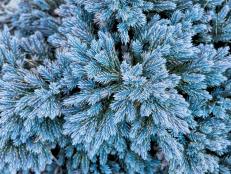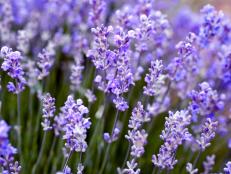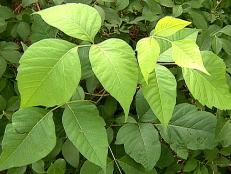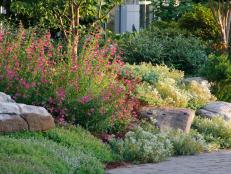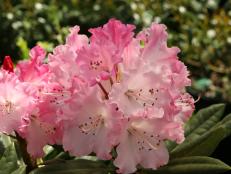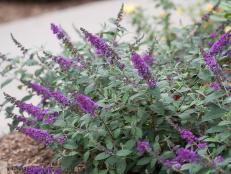How to Plant and Grow a River Birch Tree
Learn all about beautiful river birch trees, plus get expert tips and information for choosing, planting, growing and caring for river birches in your home landscape.

If you are looking for an attractive and adaptable shade tree, river birch is a fantastic choice. The exfoliating mosaic of cinnamon, salmon-pink and cream-colored bark makes a statement at any time of year. Given the right conditions, this native tree will quickly grow to a good-size, casting dappled shade on the yard below. Read on to learn more about how to grow this attractive tree in your landscape.

Shutterstock/e.backlund
Botanical Name: Betula nigra
Common Name: River Birch
Light Needs: Full sun to part shade
Hardiness Zones: 3 to 9
Height & Width: 40 to 70’ high and 40 to 60’ wide
Growth Rate: Medium to fast
River birches are native to eastern North America and are naturally found growing along streams and in bottomlands from as far north as Massachusetts, south to Florida, and west to Kansas. Although this species of birch naturally colonizes moist environments, it can perform well in hot and dry conditions too. River birch grows fairly quickly — especially when it doesn’t have to cope with dry spells. The versatility, growth rate and beauty of this species have made it a popular shade tree selection, especially for parks, spacious commercial plantings, and home gardens.
How to Use in Your Landscape
Plant your river birch in a space where it can grow happily for many years to come. The excellent dappled shade as well as the peeling bark’s ornamental appeal make this a great candidate for space adjacent to a backyard porch or patio. Small yard? No problem. Compact varieties are the perfect fit for a petite garden (see list below).
River birches rapidly grow into large shade trees. Some specimens may grow as quickly as 40 feet in just 20 years. This means that these plants need room to grow — they are not good choices for foundation plantings. Site river birches at least 20 feet away from houses or power lines where local utility companies will need to trim the tree canopy. River birch roots seek out water and will take advantage of any cracks in an old water line, so avoid planting too close to sewer pipes (which often run through front yards).
15 Fast-Growing Trees 15 Photos
River birch is a fast-growing tree. See 14 more trees that will liven up your yard and add shade quickly..
Although river birch grows well in normal and dry soils, it thrives in wet environments. If there is a poorly drained, low lying area of the yard where other shade trees have suffered, that is the perfect spot to plant a river birch. If your property borders a body of water, plant a small grove of river birch along the water’s edge to perfectly frame views with graceful, arching branches.
How to Plant River Birch
River birch is usually planted from nursery-grown containers. Begin by removing the circling outer roots with a sharp spade, planting knife or hand saw. This may seem severe, but it will help the tree in the long run by preventing future root girdling issues. Research suggests that simply tousling or attempting to untangle outer roots will not stop them from continuing to grow in a circular trajectory.
Next, pull back some of the soil from the top of the pot to find the root flare. Nurseries often plant trees deeply in containers to prevent wind from blowing plants over in the field. This practice doesn’t injure trees in the nursery, but it does need to be addressed before planting out into the landscape. Gently remove soil from around the trunk of the tree until you see the top of the first large, woody roots appear. This area should be level with the soil surface when the tree is planted.
Dig a hole that is roughly 1.5 times the diameter of the container and no deeper than the root ball. Gently place the tree in the hole, and make sure that the root flare is level with the soil surface. Break up any clods and backfill with the native soil from the hole. Water well, then spread a healthy layer of weed-suppressing mulch below the drip line of the tree.
River Birch Care
Pruning
Dead, diseased, damaged and crossing limbs will occasionally need to be removed. Avoid pruning river birch when sap is flowing in the spring to prevent heavy weeping from the wound. This is especially important in regions that may have a spring thaw followed by a late freeze, as the wounds will freeze.
Hand pruners are a great tool for trimming out small branches that are less than ½ in diameter. Use loppers to cut branches up to 3 inches in diameter. Larger branches should be removed with a hand saw. When using a hand saw, begin with an undercut on the bottom of the branch to prevent the bark from ripping and damaging the tree.
Health Problems
River birch are much less susceptible to health issues that often plague other species of birch. However, there are a few issues to be aware of when caring for these trees.
Rainy weather in the late summer and early fall creates the perfect environment for leaf spot disease. Small, dark spots will quickly spread across the leaves of affected trees, eventually leading to premature leaf drop. Although unsightly leaf spot is an annoying problem for homeowners, it happens so late in the season that it won’t seriously impact the health of the plant. For this reason, treatment for leaf spot diseases aren’t generally recommended.
Yellow leaves with green veins are a symptom of iron chlorosis, which is caused by high pH (or alkalinity) of the soil. Alkaline soils hold on to iron, limiting its availability to certain plants like river birch. Simply adding an iron fertilizer won’t resolve the issue; rather, the pH of the soil needs to be lowered 6.5. Do a soil pH test before planting to see if your landscape will be a good place for river birch to grow.
River birches used as foundation plants close to the house often suffer from iron chlorosis. Masonry work can increase the pH of the soil by leaching limestone and calcium into the growing environment. Frequently alkaline conditions (along with the fact that river birch grows so large) mean that this species is not suited for foundation plantings.
Aphids are commonly found on tender new growth and may distort leaves and branches. Although aphid damage can be irritating for gardeners, it usually isn’t serious enough to warrant treatment.
Popular River Birch Varieties
Compact Varieties
- Fox Valley (‘Little King’)– slower growing than the straight species, reaching only 10 feet in height after 15 years; may grow up to 20 feet tall; branches gracefully arch toward the ground
- ‘Shiloh Splash’ – compact tree maxes out somewhere between 5 and 15 feet in height; attractive variegated pinkish green new foliage matures to green leaves with white borders; prune out any branches that have reverted to true green leaves
- Tecumseh Compact – a slow growing, rounded form that should only grow to 20 feet tall
Weeping River Birches
- ‘Graceful Arms’ – a large tree with a pendulous, semi-weeping habit; may be hard to find commercially
- ‘Summer Cascade’ – this excellent weeping form makes an outstanding specimen tree; a slow-growing variety that may reach somewhere between 6 and 15 feet at maturity depending on nursery practices
For Extreme Temperatures
- City Slicker – a fast growing river birch with exceptional ivory inner bark and attractive dark glossy foliage; resistant to leaf spot and tolerant of drought, alkaline soils, and cold weather to -20 degrees Fahrenheit
- Dura-Heat – lustrous green foliage that stands up well to leaf spot, retaining its leaves after many other varieties have shed their foliage; good butter yellow fall color, great heat tolerance, and promising cold hardiness
- Improved Heritage – large, lustrous green leaves that withstand leafspot well; excellent cold hardiness to -40 degrees Fahrenheit and grows well in warm Zone 8 gardens as well






